(121)
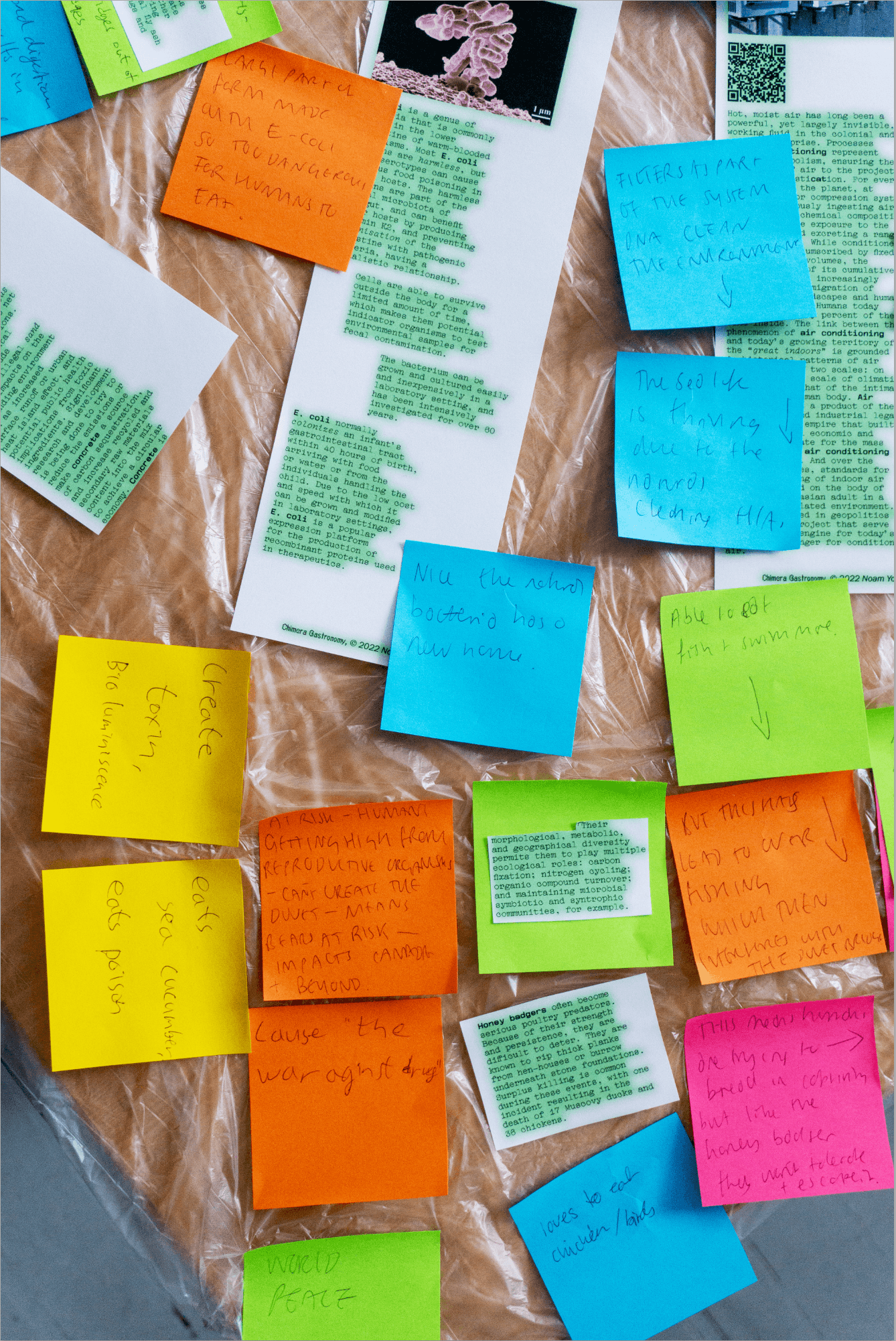
Photo: Noam Youngrak Son
(113)
Escherichia coli (E. coli) is a bacteria that normally lives in the intestines of healthy people and animals. Most types of E. coli are harmless or cause relatively brief diarrhea. But a few strains, such as E. coli O157:H7, can cause severe stomach cramps, bloody diarrhea and vomiting. Source: Mayoclinic.
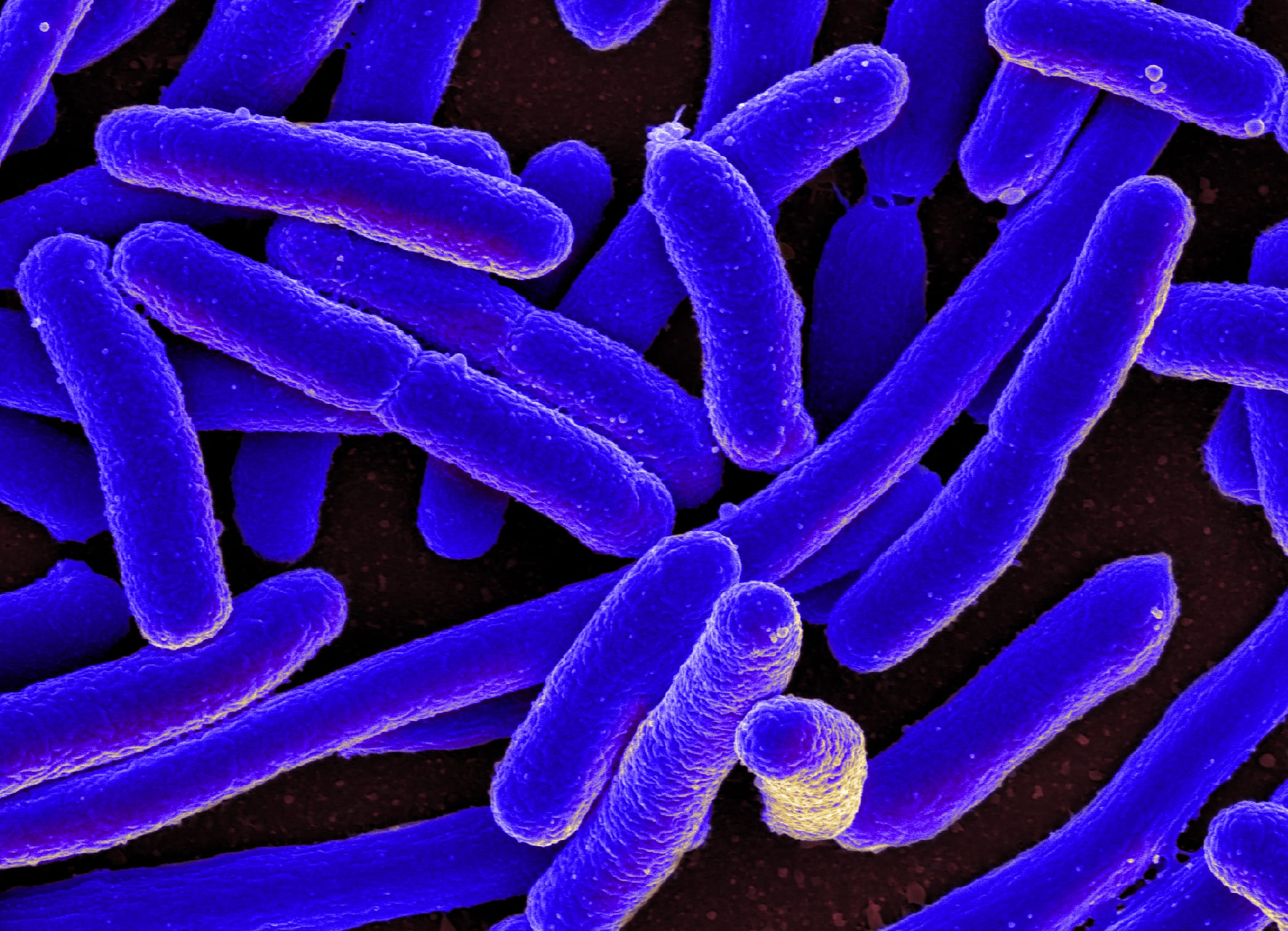
(114)
Cyanobacteria is a group of photosynthetic bacteria widely distributed in various aquatic habitats (oceans, seas, rivers, lakes, etc.) and terrestrial habitats (e.g. moist soils). They may live singly or in colonies (by forming filaments or spheres with other cyanobacteria). Cyanobacteria are important oxygen producers of the planet. Source: biologyonline.
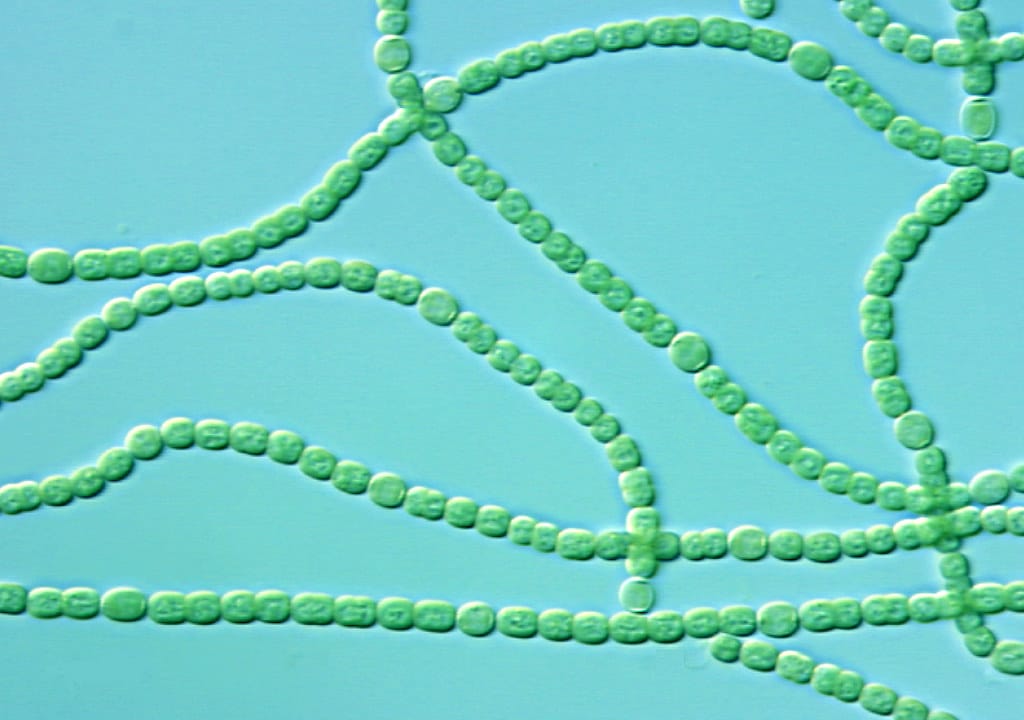
Chains of cyanobacteria, also known as blue-green algae, produce oils which could be used for transportation fuels. Image from Argonne National Laboratory.
(115)
Like here.
(116)
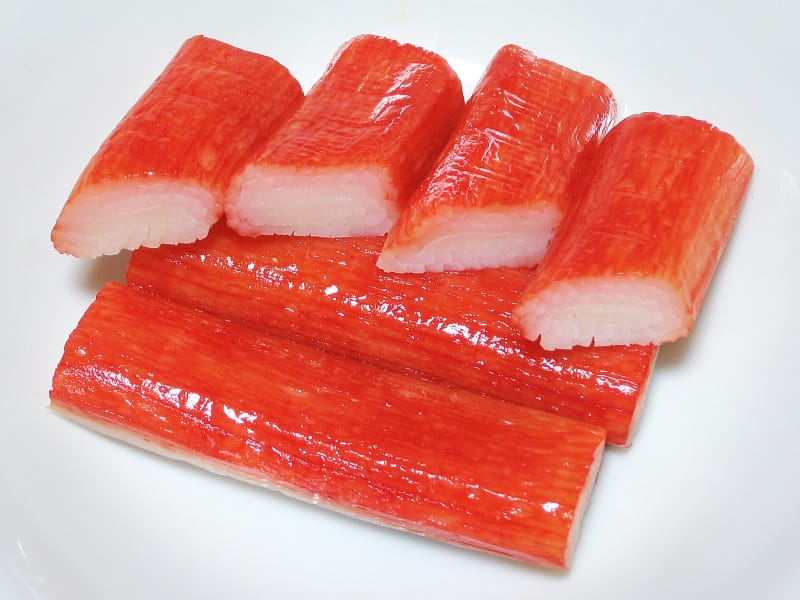
(117)

(118)
(119)
Riso in use during the Story-telling eel-orgy: Writing as an aquatic intercourse workshop program hosted by Noam Youngrak Son
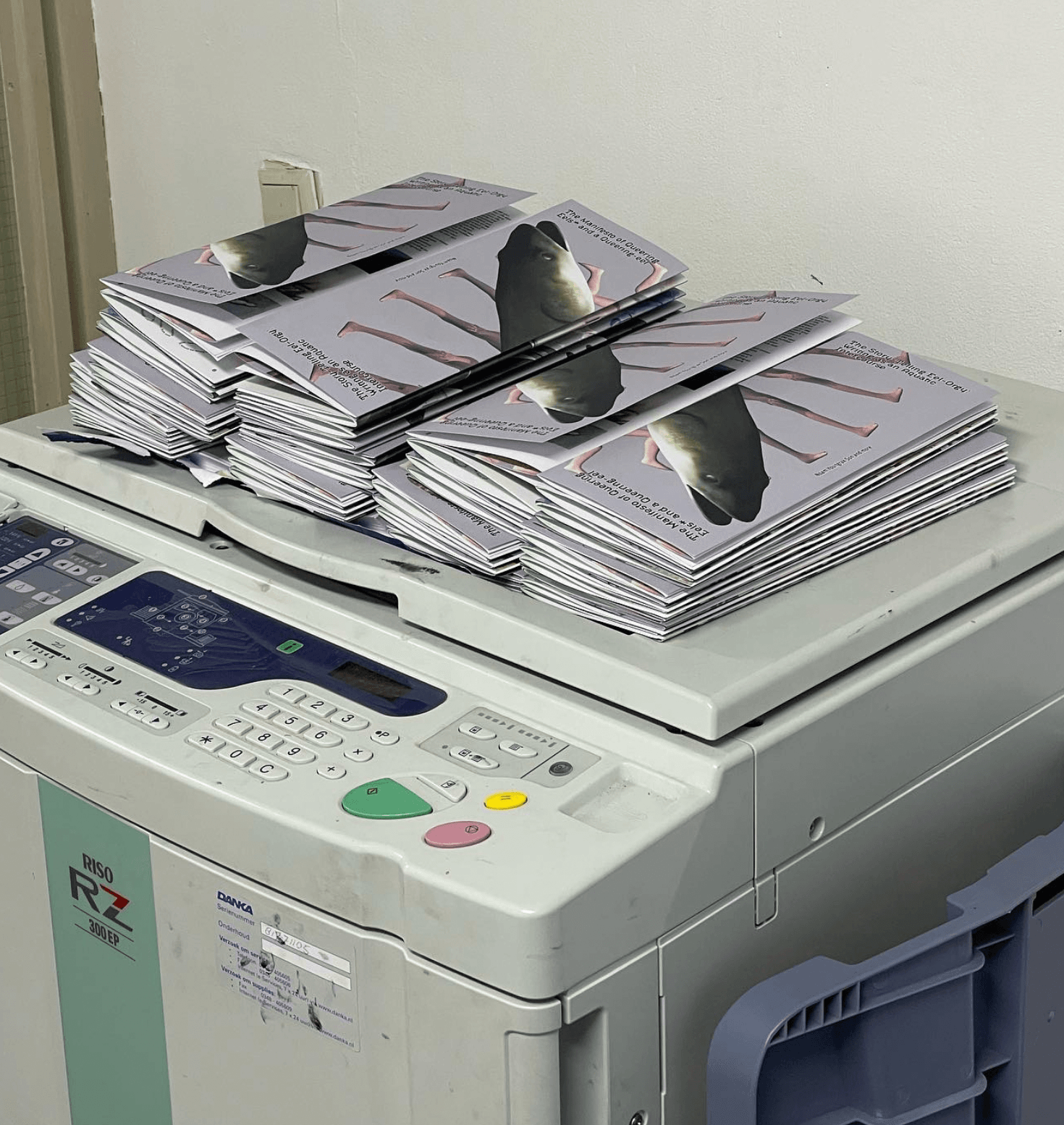
(120)
Read the maifesto of queer machines by Noam Youngrak Son here.
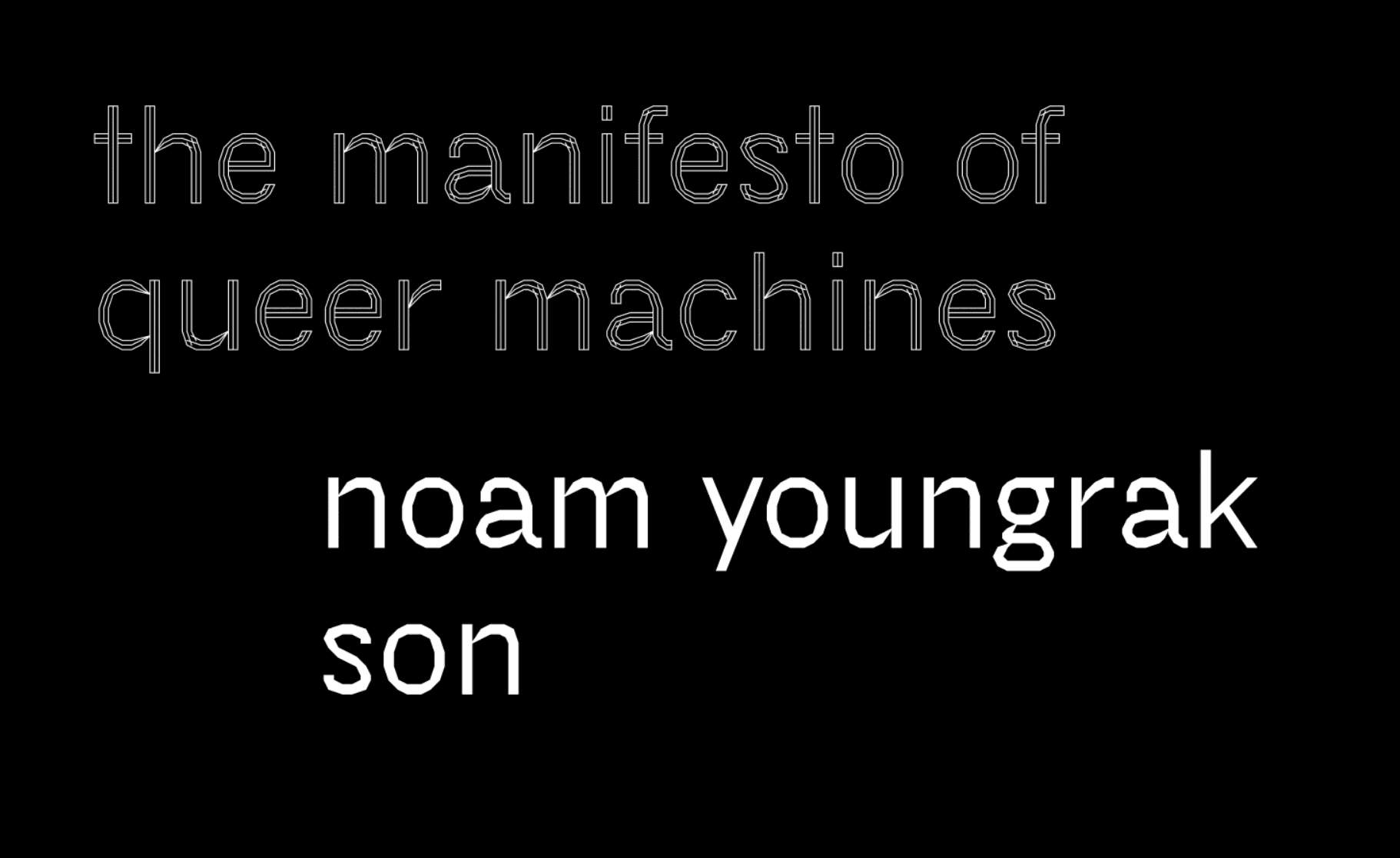
Contemplating a non-anthropocentric ecosystem
Interview with Noam Youngrak Son
Speaker at chapter 2: Self
September 2022
Words by Bethany Rigby
Noam Youngrak Son was the first speaker to take the stage at the second chapter of the Post Design Tangle, which took place in Oslo in September 2022. After getting home, we checked back in with Noam to chat about chimera creatures, adaptability and crab meat.
The program was partly redesigned in order to accommodate more discussions. Assigning another day on speculation, storytelling and zine-making based on the chimera from the first day, it made its narrative not only confined to its material form, but comprehensively expanding into the adjacent ecosphere using its body as a platform. Also, by providing the assortments of (non)organisms, I deliberately encouraged the participants to involve ‘less favored species’, not just those that would attract a lot of humans in a zoo by appearing beautiful, cute or exotic. The chimera resulted in incorporating more species such as e.coli and cyanobacteria that are invisible yet crucial in the ecosystem, as well as inorganic agents like an air conditioner that is not typically perceived as a part of the ecosystem while giving significant ecological influences.

In what way do you view this growing collection of beings? What relationship do they hold to each other, and do you imagine them interacting?
After each workshop, I 3D scan the chimera and animate it digitally. I have a collection of those moving critters with original background stories. Some parts of their lifecycle certainly align, and I believe there can be more stories to be told between those. This edition was especially more meaningful in this regard, since it created a lot more information than their appearance. I don’t exactly know yet how. There can be many ways that these bodies can be portrayed, hopefully not like an anthropocentric and colonial zoo. The fact they’re digitally documented opens up a lot of possibilities for those to be represented.
In the research phase of Day 1 of your workshop where participants delved further into their chosen ecological agents, you encouraged their attention towards translations of tactility; towards imagining crevices and textures. It came to mind that this would be an opposite thought process to that of fishermen during on-ship surimi production; where textural variations of multiple bodies are disregarded whilst forming the smooth uniform paste. It also felt in contrast to the depictions of perfect, air-brushed bodies we often see in advertising encouraging us to shave, erase and exfoliate away any textural irregularities. In your introduction you spoke about pigments, hormones and tastes- but what were your intentions behind incorporating the aspects of texture so heavily into the workshop?
A dough can be defined as ‘a malleable collection of particles that adhere to and contain each other’, ‘a carrier bag without a bag’. In the dough-making phase, I try my best to encourage everyone not to rush into figurative shapes, yet enjoy the phase that the dough still remains malleable. Being ‘creative’ humans, a lot of us are obsessed about turning texture into an image, because an image feels more definitive while texture is rather uncertain and unfinished. And it’s also often the normative ‘market demand’ that shapes surimi into imitated crab legs. I think this is partly related to our modernist design education that demands us to be ‘professional’, however, this is not how I perceive design. A wet dough can be more interesting than an absolute sculpture since it still contains a lot of information and narrative like the way Ursula K. Le Guin’s carrier bag contains stories without having a singular protagonist.

During your talk there was a sense that ‘agility’ is a central characteristic of your practice. You’ve needed to adapt projects around bureaucracy, around graffiti, around budgets. How have you cultivated an approach that allows for your plans to change, even during the late stages of the project?
It’s inevitable that it requires more flexibility and adaptability when you scale down a project, like a smaller boat being more susceptible to turbulence. Like the fact that I live in Ghent is a phenomenon arose from the intersection of various political circumstances such as the pandemic, queer rights, and immigration laws, every unexpected situation that we face during a project reflects the political urgency in that particular context. My job as a communication designer is to make that visible to an extent that it doesn’t overpower and silence the other issues that we wanted to represent.
In her talk, Nushin Yazdani highlighted some of the problematic biases of AI machine learning. As a designer also working within and around this technology for speculative storytelling, did her talk spur any thoughts on working with AI in a creative capacity?
I see it as a question of ownership of agency, and I’m optimistic that I’ll have (deviant versions of) AI as a creative companion like my crappy laptop and riso printer. Please reference this little essay regarding this
From your time in Oslo, are there any specific moments- perhaps in conversations with other speakers- that really resonate in your memory of the festival?
I learned a lot by drawing connections between our contributions. Like how ‘small practices’(me) carried out by ‘marginalized practitioners’(Sophie) can be represented through ‘names’ (Laurenz) by a ‘biased AI’(Nushin)?
Back to grid


